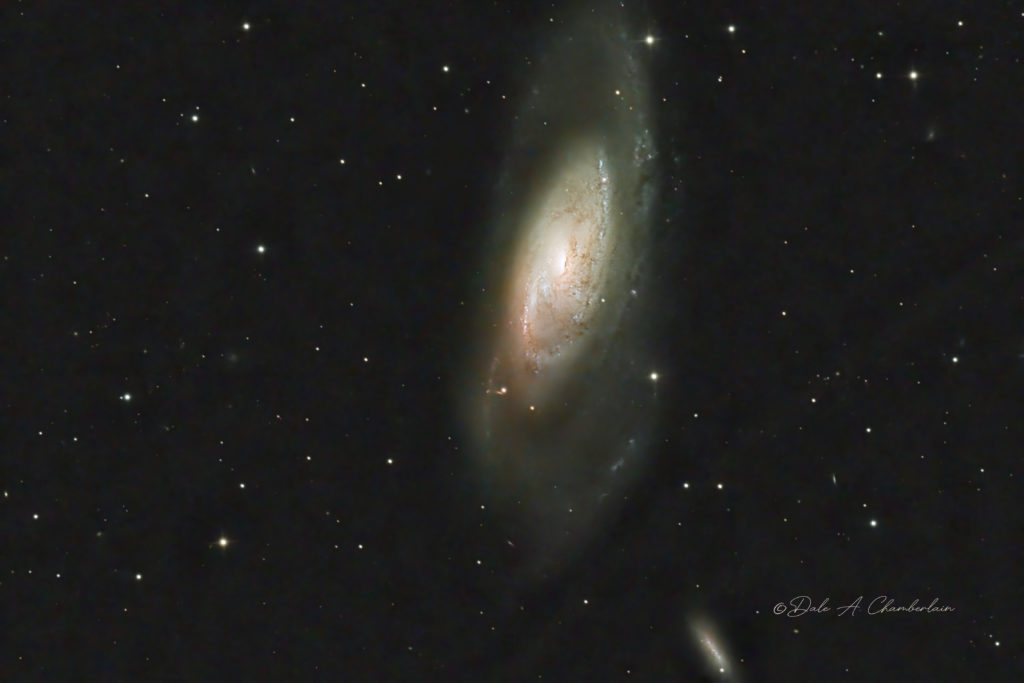
Object: Messier 106 (also known as NGC 4258) is an intermediate spiral galaxy in the constellation Canes Venatici. It was discovered by Pierre Méchain in 1781. M106 is at a distance of about 22 to 25 million light-years away from Earth. M106 contains an active nucleus classified as a Type 2 Seyfert, and the presence of a central supermassive black hole has been demonstrated from radio-wavelength observations of the rotation of a disk of molecular gas orbiting within the inner light-year around the black hole. NGC 4217 is a possible companion galaxy of Messier 106. A Type II supernova was observed in M106 in May 2014.
Taken: April 30, 2020
Telescope: Astro-Tech 14” RC with 0.65x focal reducer
Mount: Paramount ME II unguided
Camera: ZWO ASI1600MC-Pro (cooled to -15C; gain 200/offset 50) Bin 1×1.
Focuser: Moonlite Nitecrawler
Rotator: Moonlite Nitecrawler
Filters used: Luminousity on a ZWO 8 position filter wheel
Exposures: 45×120 seconds for a total exposure time of 1.5 hours; calibrated with 40 dark frames, 40 flat frames with 40 dark-flats.
Seeing Conditions:
Image acquisition software: Processed with PixInsight and Photoshop CC 2020